How To Pierce Your Ear: Top-Notch Ideas That Will Make You Ace Ear Piercing
Once you know how, you can go to town on your ears and try out all the different spots.
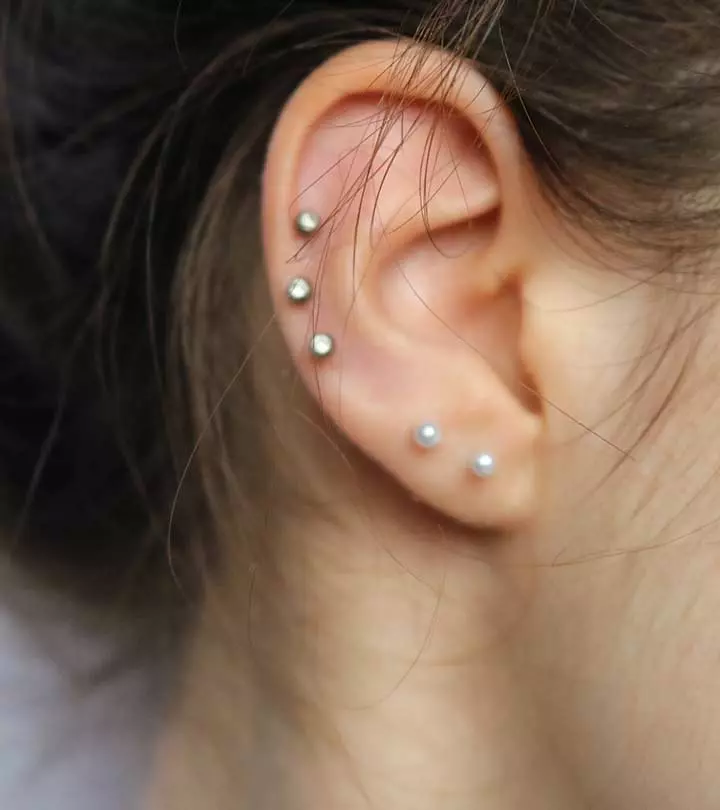
Image: Shutterstock
Piercing has become a statement of the trend for everyone in this age, starting from Kylie Jenner’s trio of hoops to Miley Cyrus’s four piercings and three-hoop cuffs.
Multiple ear piercings are on-trend; moreover, pierced ears are a creative and sophisticated way to express your personality. Fashion Stylist Michelle Wagman says, “Piercing typically refers to puncturing the skin or cartilage to insert jewelry. It is a common form of body modification and can be performed on various body parts, such as the ears, nose, tongue, and belly button.” Many of you must be looking for how to pierce your ear but did you know piercing your ears can be beneficial to stimulate the surrounding nerve areas too? It’s also breathtaking to notice that history has to do so much with piercing ears. Dating back to 5000 years ago, the primitive tribes performed it for their magical purposes. Every nation has its spiritual-religious reasons to pierce ears. Michelle Wagman also adds, “Piercings can be purely decorative or have cultural or religious significance.” If you already have piercings or are considering them but lack the necessary information for it, you are in the right place! So, without further ado, check out how to pierce your own ear.
- Metal Allergies: Opt for hypoallergenic earrings if you are allergic to metals like nickel used in jewelry making.
- Numbing Creams: Try over-the-counter numbing creams to further reduce the pain.
- Avoid Swimming: Avoid dipping your new piercing in pool water to prevent infections. But if you really have to swim, use a waterproof wound-sealant bandage.
- Practice Caution: Wait for at least three months before piercing your ears if you have recently delivered a baby. This is to ensure your body can handle the physical trauma of piercing.
In This Article
How To Pierce Your Ear Safely At Home?
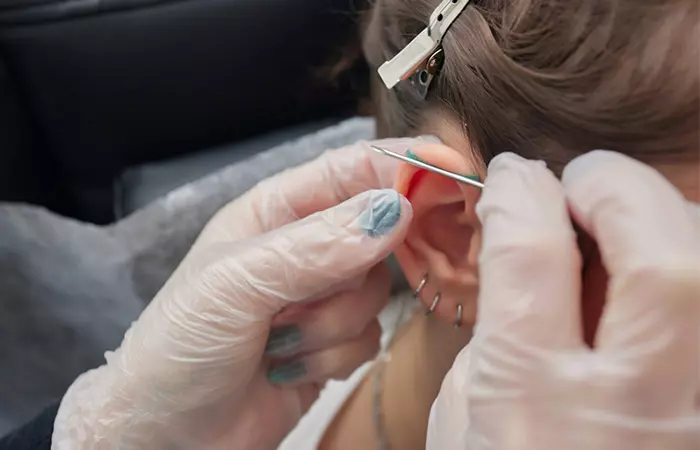
Earrings are on top of the jewelry list when it comes to fashion, and piercing ears with more than one hole have become chic à la mode. There are many ways to pierce your ears without getting them infected. Visiting an expert or a doctor can be tiring; therefore, DIY piercing becomes much easier. Of course, while doing it at home, higher precautions must be taken into consideration. So, you must do some homework on how to pierce your own ear to lower your chances of rushing to the doctor. Check out these tips on how to ensure safe ear piercings at home.

Preparing For The Ear Piercing Procedure
Proper preparation is crucial to achieve successful and painless piercing. Avoid rushing the prepping process as this can increase the chances of infection. Continue reading to learn what steps are essential before you can start piercing your ear at home.
- Cleaning The Bacteria: Wash your hands or wear gloves and thoroughly wipe the area that you will pierce either by rubbing alcohol or 70 percent pre-packaged isopropyl alcohol swabs and let your ears dry entirely. This will help in not allowing the dirt of the outer layer to go inside.
- Choosing The Needle: Always go for steel sterilized needles for piercing. Pick the needle that is one gauge bigger than the earrings you will wear; only then will the hollow center of the sterile piercing needle allow your earrings to fit right into the hole easily. With the support of an open flame, sterilize the needle until the tip turns super orangey-red. Always go for piercing earrings at first; later, you can switch to your collections. Remember, always make a mark and tie your hair up before compressing the needle. After all the preparations are done, take a small, sturdy wooden or metal and compress it against your ears, this will let the needle pass through your ears smoothly.
With the preparation done, it is also important to know how ear piercings work to choose the most suitable method for you. Continue reading to understand the perks and shortcomings of the two primary ear-piercing techniques.
Key Takeaways
- Piercings take nearly a year to get their shape correctly.
- Discharge, stinging sensation, and feeling unwell are symptoms of an infected ear piercing.
- Rotate the earrings daily to stop the hole from tightening or closing.
How Does Ear Piercing Work?
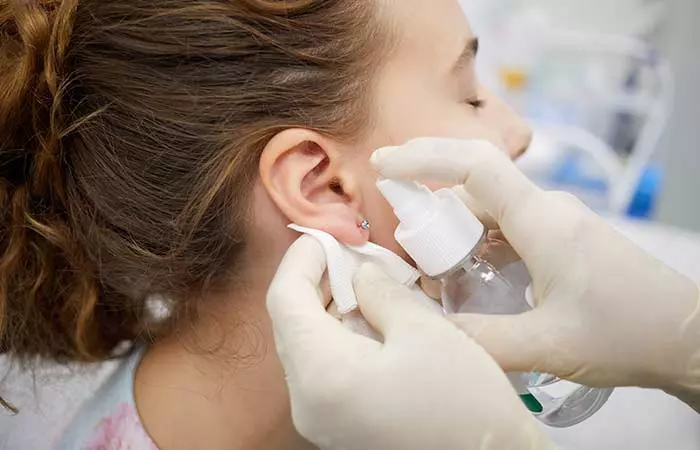
Whether you want to have lobe, helix, rook, daith, tragus, antitragus piercings, flat or conch piercing, there are two main ways to do it: through the gun or the needle. Piercing your ears is an easy process, where the needle takes a minute, and the gun slides down within a few seconds. In the case of needle piercing, the piercer chooses a hollow sterilized needle to provide the safest experience. The needle basically works like a bistoury by cutting through the skin to insert it on the other side of the ear. Moreover, don’t stress about placing the earrings after the piercing is done because the needle’s hollow space will do the magic. The earrings will get inside your ears like butter.
In the case of a gun, it will shoot a loop to your earlobe. It is the stem of the jewel that pierces the skin. Then the buckle is positioned on the backside of the ear hole. For some people, the gun seems to be loud and quite traumatic, whereas the needle is more painful and uncomfortably tingling. Everyone can choose one according to their preferences. These two techniques can be used for piercing ears at home or any professional place. You should consider the benefits of having a professional handle the process before you decide to pierce your own ears at home. Professional piercers are equipped with the right tools and training to ensure minimal pain and reduce the risk of infection or complications that can arise from improper techniques. Their expertise ensures a more accurate placement and cleaner procedure, contributing to faster healing and a better experience. They also provide clear aftercare instructions to ensure minimal risks or complications. The best part is that you can contact your professional piercer for follow-up services in case of problems like itchiness or redness. So, until you have good experience and knowledge about ear piercing, do not try it at home. If you do, exercise extreme caution.
However, an important point to note here is that sometimes you might be confused about how to know if your ear piercing is infected. This is a constant worry for anyone who pierces their ears, so here are some points on how to tell if your ear piercing is infected:
- Crumbly discharge.
- Stinging sensation with pain and redness in the pierced area
- The earrings might get stuck as the skin might swell up.
- A burning sensation in the pierced area.
- Feeling unwell.
Once you pierce your ears, you should check for any signs of infection around the piercing site. Recognising these signs early on can prevent further complications from arising. If you notice any of these signs, consult a healthcare professional to avoid more severe infections or long-term issues. Continue reading for more information on how to carry out this procedure safely at home.
How To Safely Pierce Your Own Ears

Many of you must be wondering how to pierce your own ear without it hurting—so, confused about choosing which way will be the best? To avoid pain, infections, and allergies while piercing your ears, always disinfect the needle that you are gonna use, be it the gun or the needle. What is more, disinfecting the piercing earrings is also highly recommended. By understanding and knowing the process, you can choose to do it by yourself. And make sure that the process is carried out in a hygienic condition. Moreover, selecting a needle while doing it by yourself can be easier.
And, below are some more valuable points to remember while learning how to pierce your ear by yourself before doing it.
- Pick a needle as thick as your earrings that you’re going to wear. Sterilized surgical needles are recommended. Try to go for thin earrings. As a starter, we recommend you choose golden or silver earrings with a pointy edge. You will also need an eraser to use as an object against the needle and a pen to mark the area. Chlorhexidine and cotton pads to clean the ears—a total must-need!
- You will need fire to disinfect and sterilize the needle. Do it super carefully.
- Hold and press the area where you want to get pierced or use a cloth clip. This way, the area will get a little flatter.
- Take out some chlorhexidine to put the earrings on it and also dab some on the pierced area.
- Freezing the area that needs piercing with an ice cube will make it a little painless.
- Now press the eraser on the back of where you want the ear piercing, and then press the needle to make the hole.
- Remove the eraser, and with the help of your fingers, push out the needle back by letting the earrings get appropriately placed on the hole.
- Before pushing out the needle, let it sit for 15 to 30 mins and then put on the earrings.
 Quick Tip
Quick TipThis is how you pierce your own ears to ensure maximum safety. However, it is good to learn about the risks involved in ear piercing. Check them out in the following section.
Risks Of Ear Piercings
Millions of people get their ears pierced each year, and it is a fairly safe and simple process. However, it is after all creating a hole in your body and comes with potential risks. The wound is susceptible to infections that can cause pain, discharge, and swelling. Explore the common risks and complications associated with ear piercing in depth below (1).
- Infections: Bacteria can easily access piercings if the tools and jewelry are not properly sterilized. The common symptoms of infections are swelling, pus formation, redness, and warm sensations. If the piercing infection is left untreated, it will spread to other areas.
- Allergic Reactions: Using cheap and non-hypoallergenic jewelry, especially those made of nickel can trigger allergic reactions like itchiness and swelling. In worst cases, rashes may develop around the piercing area.
- Keloids And Hypertrophic Scarring: People prone to keloids can develop raised scars in and near the piercing site. This mainly happens due to improper aftercare.
- Bloodborne Infections: Blood-borne diseases, such as hepatitis B and C or toxic shock syndrome (TSS) are rare but possible if you are using an unsterilized needle which can inject toxins into the blood causing severe bacterial infections. Buy single-use needles from piercing shops and use them once.
- Nerve Damage: Piercing areas with sensitive nerves can cause prolonged numbness and severe pain. It can press the nerves and trigger permanent damage. Consult a professional piercer to choose the right spot and mark it before piercing.
Now that you know what complications ear piercings entail, you should also know what could go wrong during the procedure. Let us read about the common mistakes one must be wary of to avoid possible risks. Scroll down.
Common Mistakes To Avoid When Piercing Your Ears At Home
DIY ear piercing at home might seem like a cost-effective alternative, but it poses significant risks such as infections, uneven piercings, and long-term complications. To ensure a safe experience, using the right tools and knowing the correct procedure is essential. Keep reading to understand the details of the common pitfalls of piercing ears at home below.
- Using The Wrong Tools: Using safety pins, sewing needles, or earrings to pierce your ears can lead to uneven results. These tools can irritate your ears’ skin and cause redness or even infections if they are contaminated. Instead, use a sterilized piercing needle that you get in a professional piercing kit.
- Not Disinfecting Your Hands And Earrings: Piercing your ears without ensuring proper hygiene like sterilizing your hands and earrings can cause severe infections. Remember to wash your hands and the earrings that you will wear post-piercing with an antiseptic solution or rubbing alcohol. If you want to wear gloves while piercing, ensure to disinfect them as well.
- Piercing The Wrong Spot: Not knowing the right place to prick a hole can be dangerous. Piercing too close to the ears’ edges or on areas with major blood vessels and sensitive nerves can cause severe pain. The best area to pierce is the soft, fleshy part of your earlobes. Place the hole at the center of the lobes, at least 6mm away from the edges. In case, you are piercing the helix area, choose a spot, which is away from the edges to prevent skin tears. Also, always mark the area you want to pierce beforehand to prevent crooked results.
- Wearing The Wrong Jewellery: Choosing inexpensive jewelry like those made of nickel can trigger itchiness or allergies. Opt for hypoallergenic pieces like surgical steel and gold to avoid infections.
- Rotating The Earrings Too Much After Piercing: Rotating the earrings just after piercing or before it has healed properly is not right. It will introduce bacteria in the holes and cause infection. This will also delay the healing process. So, clean the piercing properly with a saline solution until it heals, and avoid touching or rotating your earrings.
In the following section, we have outlined the necessary steps to care for your piercings. Proper aftercare can minimize the possible risks like infection and irritation. Read on.
How To Take Care Of Your Pierced Ears
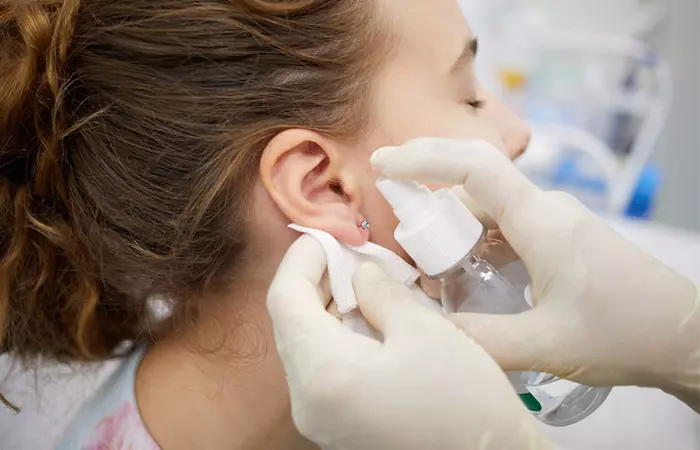
Did you know that pretty pieces of jewelry require so many responsibilities? Although piercing ears are more common and less risky, if the pierced areas are correctly handled, then complications might occur. Now that you are done with your ear piercings, it’s time to take some aftercare of the pierced area. Michelle Wagman adds, “Caring for a new piercing is essential to prevent infection and promote healing.” If you’re wondering how to clean your ears after piercing, don’t worry. I got your back again. Here are some tips on how to clean your ear-piercing. This is another must-read, so go on!
- Wash And Disinfect Your Hands: Always clean your hands. Don’t touch the piercings with dirty hands.
- Don’t Keep Opening The Starter Earrings: It will create severe pain, and also it might lead to the closing of the hole.
- Rotate The Earrings Daily: This will prevent tightening the hole or getting the piercings close.
- Dab Some Rubbing Alcohol: Do not press hard or rub the alcohol; just dab a little to disinfect.
- Switch Sides: Don’t press the piercing area for too long. Switch sides while sleeping.
- Keep An Eye On Abnormal Discharge: Unusual discharge can be a sign of infection, so immediately see a doctor if noticed.
- Keep The Externals Away: Remove external elements out of the piercing area. Don’t let your hair contact the pierced area.
- Avoid Any Soap: Clean the area with antiseptic items instead.
 Quick Tip
Quick TipInfographic: How To Easily Pierce Your Ears At Home
Ear piercings are a popular way of self-expression. If you are tired of plain earlobe piercing, it’s time to jazz things up a little. You can easily create as many ear piercings as you like at home. Mix and match cute studs and drop earrings, and voila! However, there are a few simple steps you must carefully follow. Check out the infographic below to learn more.
Some thing wrong with infographic shortcode. please verify shortcode syntaxBody modification has become a popular way to express oneself. Ear piercing is one of the most popular types of body modification that can be done at home. But, one must know about proper ear-piercing techniques to avoid possible complications. Since piercing at home requires in-depth knowledge and expertise, it is best to have it done by a professional piercer. Following proper aftercare practices like regular cleaning and maintaining the piercings helps you to avoid infections and scarring. However, infections might occur in a healed piercing area too. To prevent that, choosing the perfect size of piercing earrings is essential. If you see any complications, then proper treatment can help in treating the infections. Moreover, wait until you’re healed adequately after putting on the starter earrings. Cleanse the piercing using a mild antiseptic lotion. Disinfect twice a day for about three weeks, then adopt a more prolonged interval until complete healing.
Frequently Asked Questions
How does the cost of professional ear piercing compare to doing it yourself?
The cost of an ear piercing done by a professional typically ranges from $40 to $110, depending on the location of the studio. Piercing on your own is cheaper as you will only need to buy a quality piercing needle that costs roughly around $10.
Can I use a sewing needle to pierce?
No, you should not pierce your body parts with a sewing needle due to the higher risk of skin infection.
Can you get paralyzed from piercing your ear?
No, the act of piercing your ear does not paralyze you. However, not cleaning the wound properly or piercing with a dirty needle can result in an infection. In rare cases, the infection may lead to paralysis.
Do ear piercings bleed?
Yes, ear piercing can bleed immediately after the procedure. If you notice pus oozing out with the blood, consult your doctor.
Is gunshot ear piercing painful?
Yes, gunshot ear piercing is painful. Piercing with a needle is considered a safer and less painful procedure than gunshot piercing.
Some thing wrong with illustration image shortcode. please verify shortcode syntaxLearn how to pierce your ears at home like a pro! Get step-by-step instructions and tips from this video to make the process safe and easy. Check it out!
References
Articles on StyleCraze are backed by verified information from peer-reviewed and academic research papers, reputed organizations, research institutions, and medical associations to ensure accuracy and relevance. Read our editorial policy to learn more.
- Body piercing: complications and prevention of health risks
https://pubmed.ncbi.nlm.nih.gov/22175301/
Read full bio of Michelle Wagman
Read full bio of Sushmita Barman
Read full bio of Madhumati Chowdhury
Read full bio of Pahul Nanra









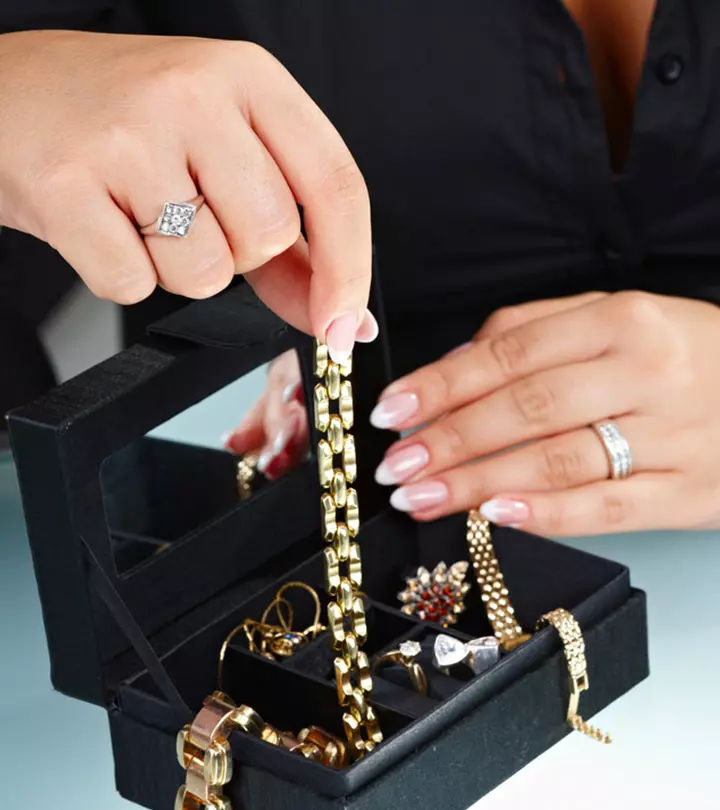








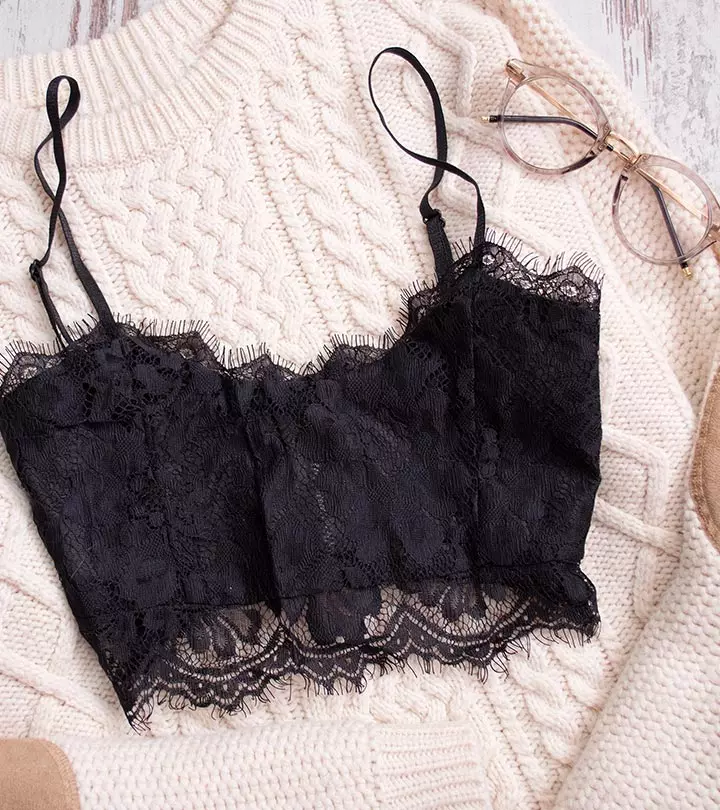


Community Experiences
Join the conversation and become a part of our empowering community! Share your stories, experiences, and insights to connect with other beauty, lifestyle, and health enthusiasts.